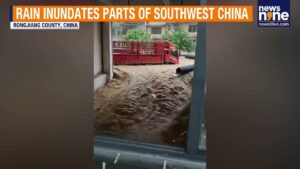
Trump’s Executive Order on Disaster Preparedness
• President Trump has signed an executive order directing state and local governments to play a more active role in disaster preparedness.
• The order does not significantly shift responsibility as states and local governments are already in charge of disasters.
• FEMA, the country’s disaster response arm, starts working on a disaster only when requested by the state government.
• Without FEMA, states would need to find thousands of additional personnel to inspect damage, distribute disaster aid, and plan the rebuilding of public infrastructure.
• Without federal funding, states would face billions of dollars in recovery costs.
• FEMA also helps states prepare for disasters, which can reduce the damage they cause and the number of lives lost.
• FEMA is now responding to three to four times more disasters than it did in the 1980s.
• States work with FEMA, but FEMA doesn’t take over the disaster responses.
• FEMA is responsible for marshalling resources from the entire federal government, including from the Department of Defense and the U.S. Army Corps of Engineers.
Federal Response to Hurricanes: A Massive Response
• North Carolina residents received shelter, food, medical help, and search and rescue for Hurricanes Helene and Milton.
• FEMA, a federal agency, responded with 8,500 federal workers for both storms.
• FEMA’s primary role is providing aid to disaster victims, known as “individual assistance,” including funds for temporary housing and home repairs.
• FEMA’s call centers for Hurricane Helene received over half a million calls per week, many of which went unanswered.
• Without FEMA, states would need to find and train a similar staffing effort to process disaster aid quickly.
• FEMA also provides funding to local governments and tribes to rebuild public infrastructure after disasters, known as “public assistance.”
• The Trump administration’s recent firings of over 200 FEMA employees are expected to make the agency less able to handle future disasters.
• Smaller states have limited resources and staff to prepare for disasters ahead of time, making infrastructure and landscape-scale projects out of reach for local government budgets.
• Experts suggest that FEMA’s disaster response efforts could be improved, especially in the complex process for local governments to get funding for rebuilding.
• The director of the Alabama Emergency Management Agency suggested giving public assistance for local governments as a “block grant,” instead of being managed by FEMA.
• Without federal guidelines to build with climate change in mind, many states have little incentive to build projects better, as the financial responsibility for rebuilding after the next disaster largely falls on the federal government.
source



